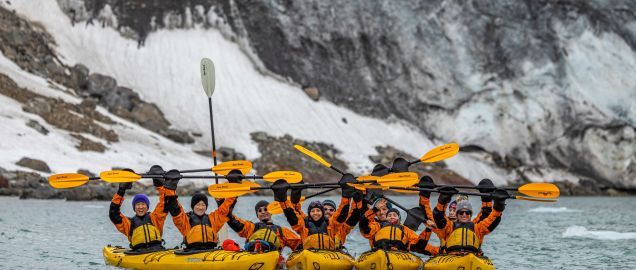Southern Ocean Odyssey
Next DepartureNov. 3, 2025See all departures |
Duration15 daysSee the itinerary |
Activities
, Kayaking, Lectures, Photography, Wildlife observations, Zodiac |
On this extraordinary 15-day voyage, experience the fascinating Falkland Islands and the mind-blowing beauty of Antarctica. Brimming with wildlife, culture and history, experience the majesty of some of Earth's least-visited and most spectacular destinations!
Departing the bustling Uruguayan capital of Montevideo, this thrilling voyage will allow the brave few to experience the wonder of the Falkland Islands and the mind-boggling majesty of Antarctica.
From Montevideo, we will set out southwards towards the Falkland Islands (Malvinas). A British Overseas Territory, the Falklands are a unique blend of British culture (expect tea and red phone boxes) and southern wildness, where penguins cavort alongside sheep on former battlefields. Witness vast penguin colonies, experience the flight of albatross overhead, and marvel at marine mammals playing in the surf. Meet the locals and soak up the lifestyle of Stanley, the islands capital, and one of the most unique cities anywhere in the world - inhabited by over fifty nationalities, despite its tiny size!
Leaving civilisation behind in the Falkland Islands, we next venture out across the infamous Drake Passage, we will delve into the inlets and bays of the Antarctic Peninsula, where glittering ice cliffs and precipitous peaks rise straight out of the frigid water. Icebergs, glaciers, mountains and rugged snowfields characterise this wildly beautiful alien landscape. We always aim to visit locations which showcase the best of Antarctica, and we are always on the lookout for wildlife; feathered friends and jaw-dropping scenery and landscapes are guaranteed! Shore landings and Zodiac safaris will occupy our days, while our knowledgeable onboard Expedition Team will offer a selection of specially crafted lectures to inform your matchless expedition experience.
With only one departure at the start of the season, this unique voyage has to be experienced to be believed!
Facts about Southern Ocean Odyssey
- Antarctica


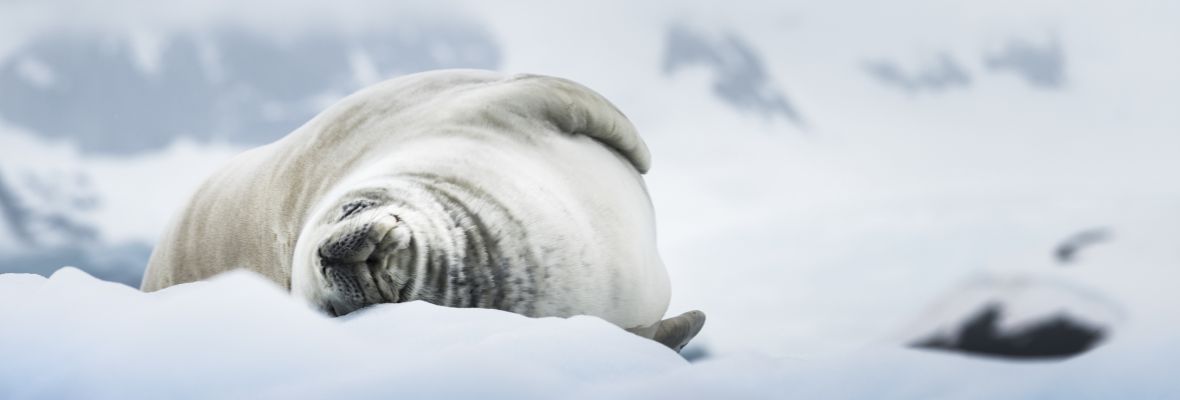
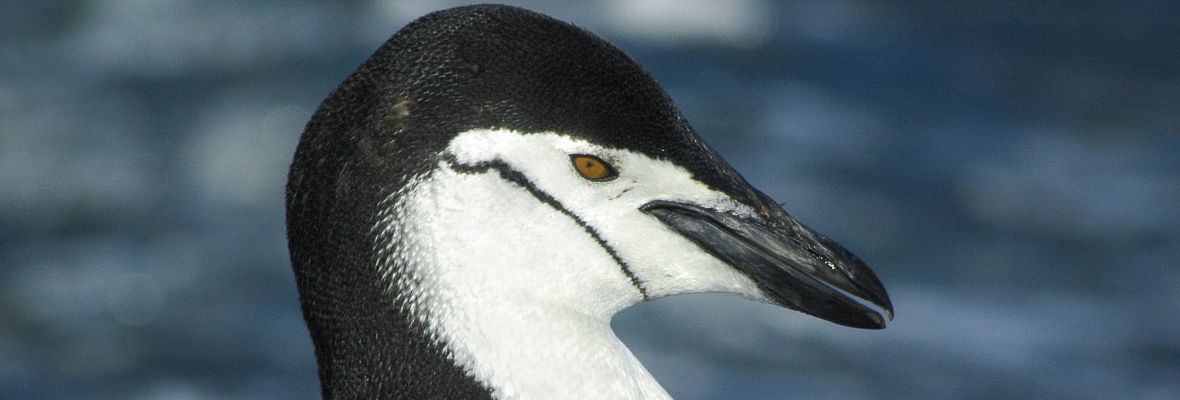


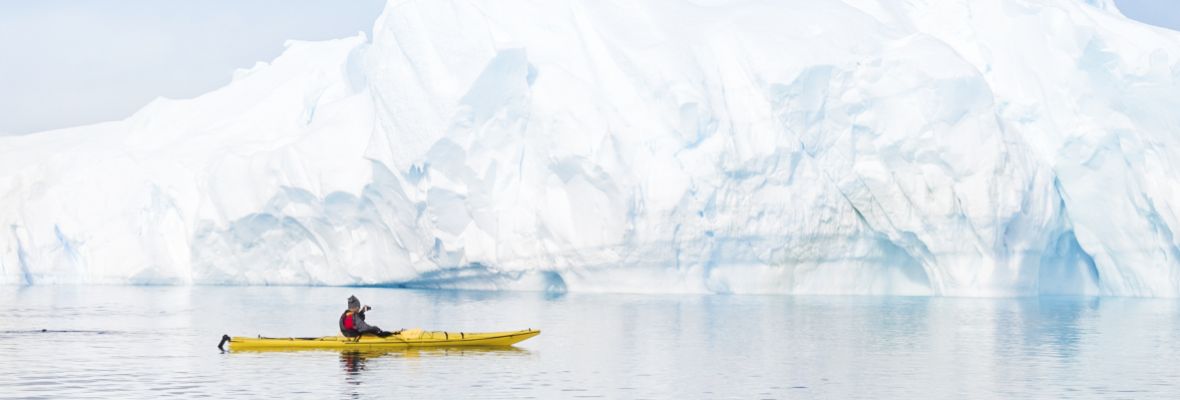

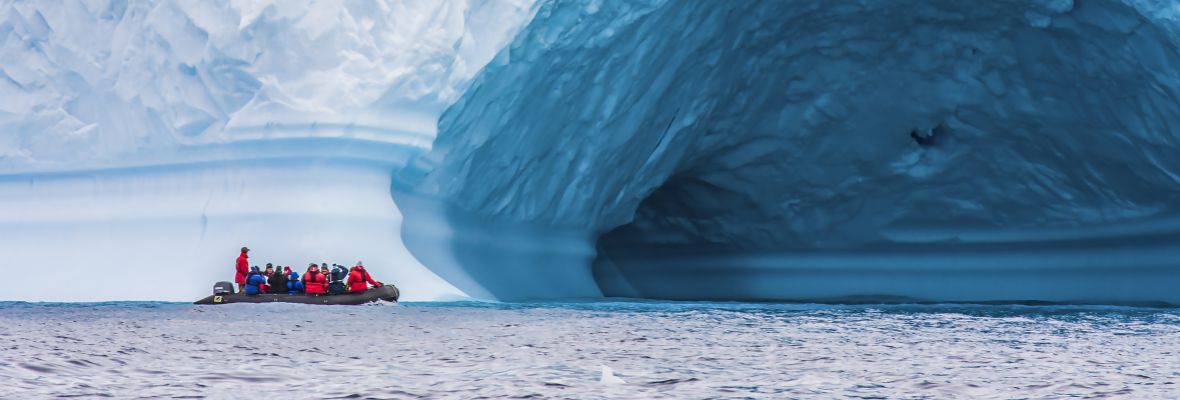
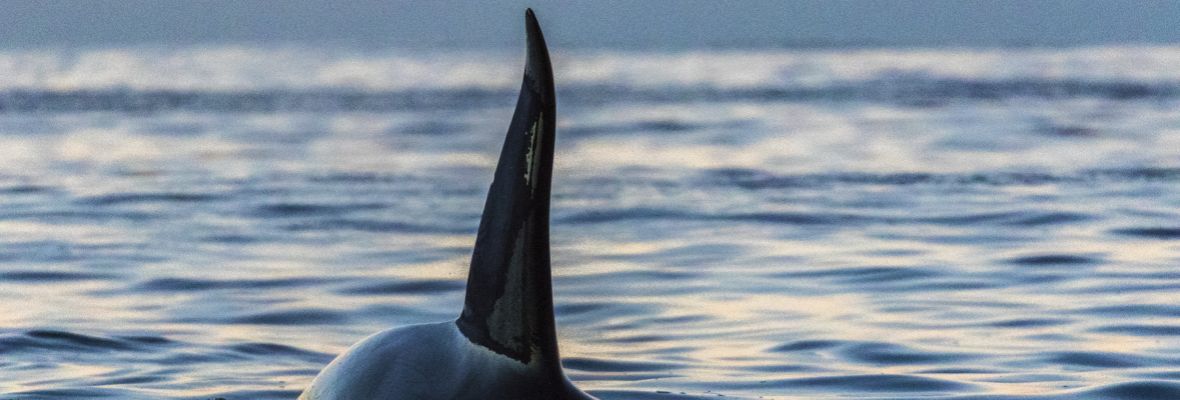
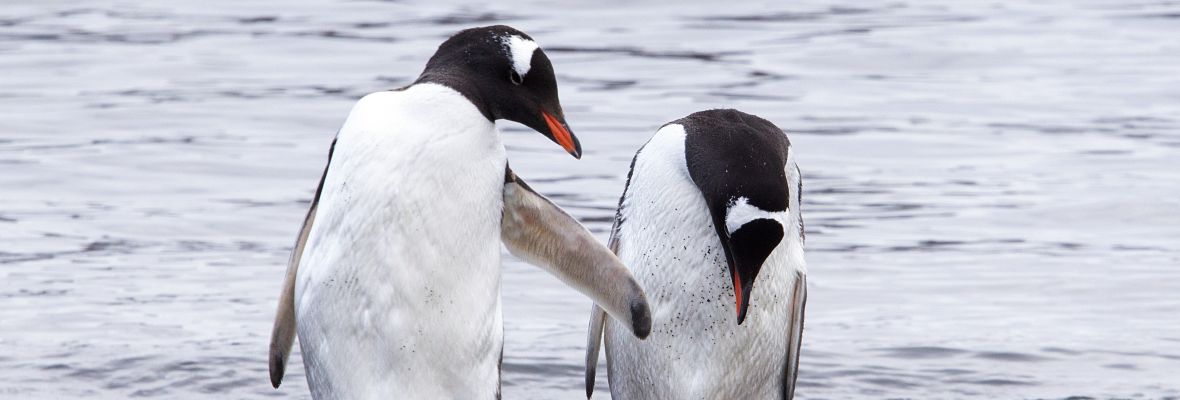

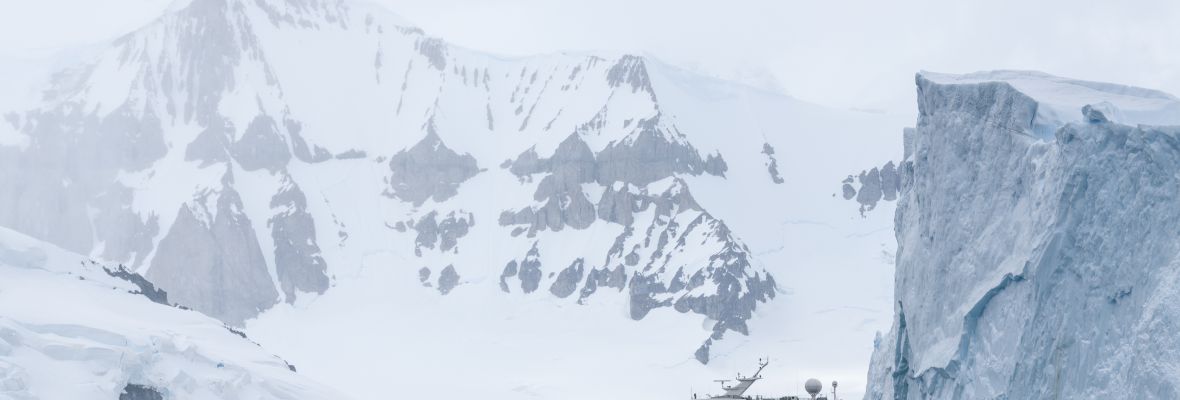
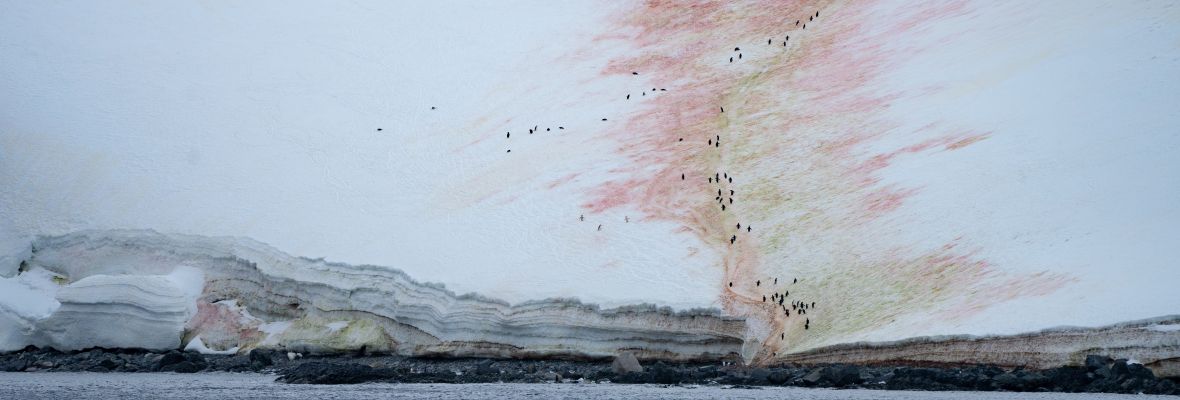
Day 1
Embarkation, Montevideo, Uruguay
The city of Montevideo sits at the mouth of the Rio de la Plata, the vast estuary which holds not one but two capital cities (the vast Argentine capital of Buenos Aires being just across the water). Montevideo is a bustling yet laid back city, where locals sip yerba mate strolling along the sea front, and the smell of asado barbeque drifts on the ocean breezes.
At the heart of the city lies the harbour, where Ocean Albatros awaits. After our mandatory safety drill, our expedition begins as we navigate through the calm waters of the Rio de la Plata. Soak up the sun on the outer decks as we leave South America behind, setting a course towards the Falkland Islands (Islas Malvinas).
Day 2-4
At sea, en route to the Falkland Islands
Following the ocean currents of the South Atlantic, we head towards the rarely-visited Falkland Islands (Islas Malvinas).
While the indigenous Yaghan people of Tierra del Fuego may have visited the islands, the Falkland Islands had no indigenous population when Europeans arrived in the early 16th Century. The islands' sovereignty has been contested ever since, with historical Spanish, French, British and Argentine claims. Tensions resulted in a conflict over the islands between Britain and Argentina in 1982, which left a lasting impact on the islands. While it spurred much-needed development assistance from the United Kingdom, the conflict also left much of the islands heavily mined. Since the conflict however, the islands have flourished, selling lucrative fishing rights to their rich waters. The de-mining operation was completed in 2020, celebrated by a football match on the last patch of de-mined ground between the islands' Governer and the Zimbabwean de-mining team who have made the Falklands their home.
The waters around the Falklands are some of the richest in the world, with huge whale, seal and penguin populations feeding where cold Antarctic waters meet the warmer waters of the South Atlantic, so keep binoculars at the ready! Otherwise, join your Expedition Team lecturers to hear about these islands' fascinating history, biology and unique 'Kelper' (as the locals call themselves) culture.
Day 5-6
Western Islands and Port Stanley
On our first day in the Falklands we will venture to some of the outer islands in the West Falklands - 'Camp', as the locals call the area outside Stanley. The outer islands of the Falklands are much wilder and more remote than the mainland, and host the majority of the islands' wildlife. Islands such as West Point, Carcass and Saunders are well known for their spectacular wildlife. Southern Rockhopper Penguins, Black-Browed Albatross and King Cormorants commonly nest together in vast cliffside colonies; penguins nurture their eggs and chicks in clefts between large cylindrical nests where cormorants and albatross nest. Be sure to look out above to see the vast albatross coming in to land (often less than gracefully)! The islands are home to a vast number of other bird species such as the endearingly cheeky Striated Caracara (watch all unattended possessions), and in the water Commerson's dolphins and South American sealions can be seen playing.
During the following morning we will cast anchor in the sheltered natural harbor of Port Stanley in the early afternoon. Utilizing our Zodiacs, we will land in the centre of this small city. Stanley is the only settlement on the islands of any size, with a population of around two thousand people. Behind the colourful buildings in neat rows, look closer and you will notice a very distinctly British feel to Stanley - Victorian houses which could be on any swanky London terrace line the harbourfront; red telephone and post boxes stand by the jetty; whitewashed pubs serve fish and chips alongside foaming pints of ale. The Falkland Islanders are proud of their unique homeland and capital, and Stanley is a great place to explore and soak up the local vibe. Highlights in the city include Christchurch Cathedral, the southernmost Anglican cathedral on Earth, as well as excellent shops selling local products (watch out for high quality woollen good in particular!), cafes and pubs offering a warm welcome, and several excellent museums; visitors are spoiled for choice! A short drive or a pleasant walk from the city are several stunning beaches; formerly heavily mined, these are now open, and locals and foreigners alike often visit to see the abundant penguins and spectacular gold-white sands.
Day 7-8
AT SEA - CROSSING THE DRAKE PASSAGE SOUTHBOUND
Sailing onward from Stanley, we cross the infamous Drake Passage - the body of water separating Patagonia and the Antarctic Peninsula. The Drake Passage is known for rollicking conditions and strong westerly winds, nicknamed the Furious Fifties. While this passage may be challenging, you can rest comfortably aboard our expedition vessels, which are purpose-built with stabilizers, powerful engines and manned by a highly-qualified crew. The most spirited sailors consider Drake Passage a lifetime achievement - and you will complete the crossing twice!
Our days in the Drake Passage will be put to good use preparing for our arrival in Antarctica - your Expedition Leader will brief you comprehensively on how to stay safe and minimise your impact on this precious wilderness, as well as briefing you thoroughly on our plans for our time spent exploring, including hints and tips for wildlife watching. Our dedicated Expedition Team will assist you to biosecure your clothing and equipment (a vital process to protect Antarctica's delicate ecology), as well as sharing tailored lectures on Antarctic exploration history, wildlife, geology, glaciology and more!
We will cross into the Antarctic Convergence on our second day at sea from the Falkland Islands - watch the mercury plummet as we sail southwards into Antarctic waters, an abrupt cooling that marks the intersection of Antarctic waters with the warmer waters of the Atlantic and Pacific Oceans. As the sea cools, wildlife multiplies; these are some of the most biologically productive water on Earth, so expect to see petrels, albatrosses and potentially penguins, seals and whales in abundance.
Day 9-11
The Antarctic Peninsula
We will awake on the ninth day of our expedition to the glittering ice cliffs and drifitng icebergs of the Antarctic Peninsula. Our exact route will be subject to careful planning by the Expedition Leader and Captain, and explained to our guests through regular evening briefings. However we will aim to visit a range of sites which showcase the best of this staggeringly beautiful region.
Consisting of the 'spine' of the Antarctic Peninsula and a large number of mountainous glaciated islands, the Gerlache Strait is what comes to mind when most people think of Antarctica, and will likely be the setting for our time in Antarctica. Marvel at the massive icebergs and vast glaciers on a Zodiac cruise in Paradise Bay. Be moved by penguins tenderly caring for their precious eggs, and fiercely defending their nests on Cuverville Island. Watch cataracts of ice tumble into clear blue ocean on a hike over the active glaciers of Neko Harbour. Experience the Antarctica of old at historic huts such as Damoy Point, lovingly restored and open to all. Feel the spray of water from the blow of a humpback whale on a Zodiac safari in Wilhelmina Bay. Wonder at awe-inspiring scenery on a ship cruise through the Lemaire Channel. Wherever we go on the Antarctic Peninsula, endemic wildlife, tantalising history and breathtaking natural beauty abound.
On Antarctica, all human activity is subject to the whims of Mother Nature. While we will make every possible effort to maximise opportunities for exploration off the vessel, the safety of our guests and crew is our top priority. We therefore ask all our guests to join the expedition spirit and be flexible - harsh weather offers the opportunity to expand your knowledge of Antarctica with lectures from our expert Expedition Team, or to enjoy the superlative comfort of our vessels, be it wine-tasting, relaxing in the hot tubs, or recharging with a relaxing massage in our Polar Spa.
Day 12
The South Shetland Islands
Our time in Antarctica concludes in the South Shetland Islands. This chain of rugged rocks marks the northernmost point of Antarctica, and the most exposed to the fury of the Southern Ocean. Because of this, it is also one of the richest in terms of wildlife, with large Gentoo and Chinstrap Penguin colonies, and an abundance of large seabirds such as predatory Giant Petrels. The epic ice-clad mountains of Livingstone, Greenwich and King George Islands form a spectacular backdrop to an otherwise stark landscape.
Sites which may be visited in the South Shetland Islands include the black steaming sands and rusting ruins of Deception Island (an active volcanic crater), the bustling penguin colonies of Aitcho and Half Moon Islands, or the old sealers' anchorage of Yankee Harbour.
From the South Shetland Islands, we will venture back into the Drake Passage, setting a course for Uhsuaia, Argentina.
Day 13-14
AT SEA - CROSSING THE DRAKE PASSAGE NORTHBOUND
After departing Antarctica, we will spend two days at sea on our way northwards, back across the infamous Drake Passage towards the more welcoming shores of the Beagle Channel and Ushuaia, Argentina. During our time at sea, a variety of activities will be arranged on board to provide our guests with the chance to reflect on their voyage. Relax with an expertly crafted cocktail in the Nordic Bar in the company of new friends, soak up the knowledge and passion of our Expedition Team during lectures in the Shackleton Lounge, or simply enjoy the flight of the albatross which accompany us northwards.
During your last evening onboard, join the Captain and Officers for the Farewell Cocktail Party, followed by a presentation of photos and video by our onboard photographer - the ideal opportunity to re-live your Antarctic adventure. Skål!
Day 15
Ushuaia, Argentina - Disembarkation
On the morning of the final day of our voyage, we will arrive back at the pier of Ushuaia, Argentina. Trees, grass and a busy city may seem strange to you after the white wilderness of Antarctica! After a hearty breakfast, it is time to bid a fond farewell to the Crew and Albatros Expedition Team, and descend the gangway back to dry land with memories of the voyage of a lifetime.
During your last evening onboard, join the Captain and Officers for the Farewell Cocktail Party, followed by a presentation of photos and video by our onboard photographer - the ideal opportunity to re-live your Antarctic adventure. Skål!
Inclusions
- 15-day cruise with accommodation in a shared double stateroom featuring ensuite facilities
- Embarkation shuttle transfer to the vessel from Montevideo city centre
- Shuttle transfer after disembarkation from the ship to Ushuaia city centre or airport
- All Zodiac landings and excursions, as per itinerary, guided by our Expedition Team
- Expedition parka
- Rubber boots loan scheme
- Briefings and lectures by our Expedition Leader and Team
- English-speaking Expedition Team
- Full board on the ship - breakfast, lunch, dinner and snacks
- Complimentary house wine, beer and soda at dinner (selected labels and brands, served at our a-la-carte dinners)
- Free tea and coffee available 24 hours
- Taxes and landing fees
- Special photo workshops
- Welcome and Farewell Cocktail Parties
- Digital visual journal link distributed after the voyage, including voyage log, gallery, species list and more!
Exclusions
- Extra excursions and activities not mentioned in the itinerary
- Single room supplement and stateroom upgrades
- Meals not on board the ship
- Beverages (other than coffee and tea)
- Tips for the crew (we recommend USD 16 per person per day)
- Personal expenses (e.g. Albatros Polar Spa services, Albatros Ocean Boutique purchases)
- Anything not mentioned under 'Inclusions'
After crossing the Southern Ocean, your vessel will arrive in the Falklands Islands and eventually Antarctica. The goal for the days spent exploring in the Southern Ocean is to offer activities which will allow everyone to explore off the ship as much as possible (weather permitting). Weather dependent, we will try to offer two activities per day, usually either a landing or a Zodiac cruise.
Typically, there will be a morning activity after breakfast and an afternoon activity after lunch. We always try our hardest to meet this expectation, but because weather in the Southern Ocean can be extremely unpredictable, we ask everyone to be mindful of our remote location and thank everyone in advance for their flexibility. Activities we offer include landings, Zodiac cruises and ship cruises. Regulations in Antarctica limit the number of people ashore at any time, so we will usually aim to offer a Zodiac cruise while our first group of guests are ashore, and reverse this for the second group ashore to maximise exploration time. No matter the day’s planned activities, the onboard Expedition Team and Expedition Leader will work as hard as possible in conjunction with the Captain and Crew to maximise exploration opportunities.
A “typical” expedition day may look like this (subject to weather and sea conditions and sailing schedule):
- 06.45: Wake-up call
- 07.00-08.00: Breakfast
- 08.30-11.30: Morning activity - landing and/or Zodiac cruise
- 12.30-13.30: Lunch during vessel repositioning
- 14.30-17.30: Afternoon Activity - landing and/or Zodiac cruise
- 18.30-19.30: Evening Recap and Briefing with the Expedition Team
- 19.30: Dinner
- 21.00: Evening entertainment or presentations with the Expedition Team
Landings are a great opportunity to stretch your legs and set foot ashore to visit the dense penguin colonies, vast snowfields, and dramatic landscapes of the last continent. Our experienced Expedition and Deck Teams will assist guests to board and disembark the Zodiacs, the only means by which we can access these remote and rugged shores. Our friendly team will always be on shore to help you spot and identify the different species of penguins and other wildlife, guide hikes and other excursions, interpret what you are seeing, as well as keep our guests safe on shore from any potential hazards. Different landing sites exhibit a variety of exploration opportunities - these could include penguin or other wildlife colonies, historical sites, active research stations, or simply locations of exceptional natural beauty. Our knowledgeable Expedition Leader will always try to ensure landing sites are selected with variety of experiences in mind to exhibit the best of the region.
Some sites do not offer landing opportunities, but are locations where exploring on the water offers the best opportunities for sightseeing and photography. These Zodiac cruise sites are often known for their collection of larger icebergs, wildlife densities and even historical landmarks such as shipwrecks, where our fleet of Zodiacs offer the best vantage point. Zodiac cruises are great for observing icebergs, glaciers, whales and other marine wildlife. Your skilled driver will navigate around the area looking for wildlife and beautiful land- and seascapes. By the end of the voyage, Zodiac cruises tend to become a firm favourite among our guests because of the vast diversity of scenery and marine life it is possible to experience.
In the event we encounter bad weather or are in a particularly spectacular location, often our purpose-built expedition vessels are the best viewing platform. The Captain and Expedition Leader will search for locations best accessed with the vessel, seeking out the best wildlife and scenery. We encourage everyone to bundle up and either head onto the outer decks with the Expedition Team or relax in superlative comfort in our specially-designed lounges to experience the majesty of Antarctica from the best vantage point. The unique sloping X-Bow design of our vessels offers unimpeded views from almost all vantage points, as well as hydraulic viewing platforms on Deck 5 for intimate al fresco viewing close to the water. During ship cruises, our Expedition Team specialists will be on hand to answer questions, point out widlife and other sights, and offer hints and tips on photography.
Voyages from October to December typically offer camping options to spend the night on Antarctica, whilst most voyages throughout the season also offer kayaking (both may be booked and paid onboard – weather permitting). Snowshoeing will also typically be available at selected sites during the first half of the Antarctic season, when the Peninsula is mantled in snow (additional fee applies). Other activities onboard include our Albatros Polar Gym, where you can burn some calories on our fitness bicycles or treadmills; most of our ships even have other cardio machines and strength/lifting options - and no gym on Earth has a better view! Our new purpose-built ships include the Albatros Polar Spa, in which guests can enjoy massages, facials, and other relaxing treatments (additional cost applies). The Knud Rasmussen Library is a great place to unwind between outings, with expansive views and a wide selection of Antarctic-related reading material. During your voyage you will also be able to enjoy our Afternoon Tea in the Nordic Lounge, or indulge in some retail therapy in our Albatros Ocean Boutique, which sells personal necessities as well as specially-selected Antarctic souvenirs. To deepen out guests understanding of the region, throughout the voyage our expert Expedition Team will offer skillfully-crafted lectures related to Antarctic wildlife, history, conservation and more!
In between our landings and activities we offer three hearty daily main meals. Albatros Expeditions always have allergy flexible options, healthy selections as well as a variety of vegetarian and vegan options.
Our hardworking galley crew deliver multiple Breakfast options, served in a buffet style, including a cooking station where eggs are made to order. At Lunch we are also met with a smorgasbord of mouthwatering choices. Safe to say you will have the energy for your next outing!
When it is Dinner time, you can choose to eat at the main Beagle Restaurant or book a table at the Antarctic Panorama Specialty Restaurant. Your evening meal is served a la carte, with fresh new options daily and always a selection of fixed items. There is always a vegetarian and pescetarian option available. Albatros Expeditions are known for our delicious menus and a variety of exquisite wine pairings.
Onboard you will also have the option to join Afternoon Tea with sweets, cakes or snacks served each afternoon. Albatros Expeditions have tea and coffee freely available all day throughout the vessel, while specialty coffee, alcoholic beverages and hand-crafted cocktails are available at the ship’s bars.
During October to November visitors to Antarctica can expect to see penguins coming ashore for their annual nesting season. This is the time when these birds build nests, court mates and tend their precious eggs, offering a fascinating glimpse into the lives of these charismatic birds. While still a little early for penguin chicks to have hatched, November offers the potential to see the very first hatchlings. Pristine snowy landscapes, large icebergs and lack of late-season vessel congestion can be experienced in the beginning of the season, offering a radically different experience to the high season. Unbelievable glacial ice formations and huge ice bergs stud the ocean as the last sunsets of the season occur, a majestic spectacle eventually giving way to the Antarctic midnight sun.
In December temperatures approach their warmest, daylight is longer and wildlife is even more active. The continent glows under the midnight sun and the penguin rookeries reach peak activity as the hatching starts in earnest. Whale sightings begin to be more commonplace as migrating whales arrive to feed. Midnight sun with close to 24-hour daylight occurs in this period, lighting up the patches of snow that are still left at sea level. The sea ice is also retreating, potentially allowing access to landing sites further South.
By January/February, we enter what we call ‘peak season’ with long daylight hours and flocks of fluffy penguin chicks. There is more activity in the colonies as parents head off to hunt for food for their ever-hungry young. Towards the latter part of this period, the chicks get more curious and mobile, often hanging around in ‘creche’ groups as their parents head out to sea. The added penguin activity also means that some of our landing sites become muddy and slushy in the height of the Antarctic Summer. Sea ice starts to break up in earnest, which allows vessels to venture further south, enjoying improved opportunities for whale and seal watching. Longer sunsets and shorter evenings return towards the end of February as the brief Antarctic Summer gives way to Autumn.
As we enter March/April the season starts to wind down. Whilst the whales are at their highest number, ferociously feeding to get ready for their long northward migrations, the penguin colonies start to thin out as the adorable chicks shed their bay feathers to begin adult life out in the fury of the Southern Ocean. This attracts leopard seals, which are often seen actively hunting in the clear waters just offshore. Spectacular sunsets and less snow make this a great time for photo opportunities and longer walks onshore. During this time of year the weather begins to get colder and there is an increased risk of storms, but the wild rugged beauty of Antarctica approaching Winter is unparalleled throughout the year.
In October and November, the windswept shores of the Falkland Islands begin to come to life as seabirds come ashore for the Spring breeding season after spending the long winter months in the fury of the Southern Ocean. The shoreline crawls with rockhopper penguins emerging from the depths, while albatross circle overhead, hunting for the best spot to construct their cylindrical nests. During this time of year, female elephant seals come ashore to give birth to their wide-eyed pups, which remain ashore for two months or so before heading out to sea. The islands burst into activity on land as well, as geese and other terrestrial birds begin to nest. The Falkland Islanders themselves frequently take advantage of the warmer weather to begin shearing the islands’ sheep, collecting the wool for which the islands are famed.
December represents the start of summer in the Falklands; while the weather can be warm and sunny, frequent windstorms can bring squally weather at any time. By this time of year, the birds of the islands are almost all incubating their eggs, while some early arrivals may already have chicks. Meanwhile, South American sealions are vigorously defending their territories during the busy breeding season, attempting to attract females while fending off other males.
By January and February, most eggs have hatched, and you can expect to see a variety of hatchlings beginning to find their way in the world. Penguin chicks huddle together in creches against predation from skuas, giant petrels and caracaras, while large fluffy albatross chicks sit on top of their cylindrical nests. Bird colonies at this time of year are full of activity, with parents coming and going from the open ocean to feed their chicks, and Magellanic penguins and their chicks begin to emerge from their breeding burrows.
The Falklands’ brief summer comes to an end in March, and much of the island’s wildlife begins to prepare to head out to sea for Winter. Around this time of year, penguins and seals begin their molt, spending a few weeks on land while they grow a new coat of winter-ready feathers. One can also see albatross, cormorant and penguin chicks beginning to shed their downy baby feathers in favour of their adult plumage. Watch out for broad-winged albatross flapping into the wind on their nests as they exercise their flight muscles ready for adult life. Although the weather can be less predictable this time of year, fewer vessels in the region allows us to seek out the most sheltered landing spots.
Whilst the weather in Antarctica is constantly changing, the summer months can be surprisingly mild, and generally have temperatures ranging from -2°C (28°F) to 6°C (46°F). In South Georgia, which lies to the northeast of the Antarctic Peninsula, temperatures typically range between 0°C (32°F) to 10°C (50°F); sub-zero summer temperatures are very rare. In the more temperate Falkland Islands (which lie outside the Antarctic convergence zone), the weather is milder, with summer days averaging between 11°C (52°F) to 16°C (61°F).
The extended daylight during the summer warms up more sheltered areas and on calm windless days even this far south, and a t-shirt can even be of more use than a parka! Bearing that in mind, the weather can harbor storms, snow fall, rain, or fog, which can occur at a moment’s notice. Bigger storms are rare but can lead to further rapid drops in temperature, and glacially generated katabatic winds can blow out of nowhere.
On South Georgia, ocean swells can roll in from the sea without warning, which can make landing/disembarkation conditions extremely challenging. The Falkland Islands, while warmer, can experience extremes of rain, wind, and sun (often all within the same hour). In other words, we would remind our guests that it is crucial to be ready for any weather conditions! Waterproof layers are essential for any venture off the ship in this part of the world, and we advise guests to dress in several warm layers (including hats, gloves, scarfs, and sun protection) to adjust as the weather dictates. Even in calm warm weather, we advise bringing extra clothing in a backpack, as weather conditions can deteriorate rapidly.
We also highly advise guests to consider sun protection - the lack of ozone over the Antarctic region means direct and reflected sunlight can burn skin very quickly; sunglasses are essential! Albatros Expeditions provide sturdy landing-appropirate waterproof insulated rubber boots for all guests, as well as an expedition parka for Antarctic voyages.
Albatros Expeditions strives to employ the very best Expedition Team in the whole industry. We travel in some of the planet’s most remote regions, where planning and on-location experience is key. Our routes and itineraries are subject to the prevailing sea, ice and wind conditions, which are closely monitored by the Bridge Team and Expedition Leader. Drawing on their vast experience, they find the best alternatives in the rare instances where our planned itinerary needs to be changed. Each cruise is a completely unique combination of locations, where the highlights can often be the totally unexpected. Most of our cruises provide the opportunity to spot a variety of unique wildlife, although this is subject to the whims of Mother Nature and can of course not be guaranteed. As you will no doubt experience, the joy from our Expedition Team when spotting different species on land or at sea is as genuine as your own.
This means that you as our guest are part of an adventure, a true expedition, where plans change, wildlife is encountered on their terms and your team consists of the very best experts within their fields. We strive to maintain a mix of specialists within relevant polar subjects including marine biology, ornithology, earth science, history and others. Albatros Expeditions boast a large number of Expedition Staff onboard, allowing us to maintain a high quota of staff-to-guests at 1:8, amongst the highest ratios in expedition cruising. Some of our staff have decades of experience on ships or research stations, whilst others may be performing their first season. One thing they all have in common is the wish to make each and every journey a special and memorable experience for our guests. Knowledge, skill, and passion are the trademarks of all Albatros Expedition Staff.
To ensure the safety and quality of experience of our guests, please keep in mind that the itinerary and outdoor activities during each voyage are solely dependent on weather and sea conditions. Your safety is our highest priority. The route and shore landings will be determined by the Captain and Expedition Leader and communicated to guests through regularly scheduled briefings. Albatros Expeditions reserves the right to modify the landings and locations visited during a voyage based on local weather conditions and climate to ensure a safe and enjoyable experience for all our guests. Our voyages are expeditionary in nature, and thus changes to timings are commonplace due to the environment we operate in, as well as wildlife opportunities and locations.





